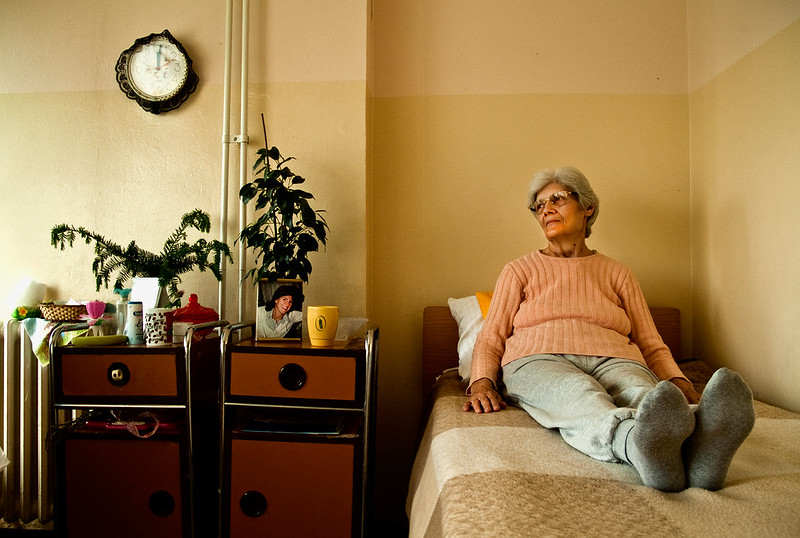
As coronavirus continues to devastate the country, congregate living facilities like nursing homes are facing outbreaks at an extreme level.
As of Thursday, the coronavirus pandemic has killed over 10,000 residents and staff members in long-term-care facilities in the 23 states that report fatality data—about 27 percent of the COVID-19 deaths in those states, according to the Kaiser Family Foundation.
And the situation is bound to get worse before it gets better. On April 25, NBC News reported:
Three states hit hard by the pandemic—New York, New Jersey and California—have ordered nursing homes and other long-term care facilities to accept coronavirus patients discharged from hospitals. The policy, intended to help clear in-demand hospital beds for sicker patients, has prompted sharp criticism from the nursing home industry, staff members and concerned families, as well as some leading public health experts.
“Nursing homes are working so hard to keep the virus out, and now we’re going to be introducing new COVID-positive patients?” asked David Grabowski, a professor of health policy at Harvard Medical School.
Nursing homes have been a cause for concern since the onset of the coronavirus, when one nursing home in Seattle had an outbreak that resulted in 129 coronavirus infections and a shocking 40 deaths. The spread is thought to have taken hold at the nursing home as early as February 12.
But the trend of nursing homes becoming hotbeds for the virus is nationwide, as MSNBC’s Rachel Maddow described on April 9:
“Pick anywhere in this country, and look at the local press there, and … what you will find … is a story … about a nursing home, an assisted living facility, a long-term care facility, a group home for adults with disabilities, a soldier’s home for elderly veterans, … a congregate living facility, particularly for disabled or elderly Americans, where they’ve got cases. Where they’ve got deaths. Where the staff is testing positive, and they’ve got profound worries, and they do not know what they’re going to do.”
Not all leaders have overlooked the nursing home coronavirus crisis: When Ireland recognized that over half of the country’s coronavirus deaths occurred in nursing homes, the Irish government addressed the issue by shifting their health care workforce to concentrate on these care facilities.
But despite this reality, the Trump administration will not concentrate resources to these vulnerable spaces. Without a national testing or organization plan, the U.S. cannot target nursing homes with the same effectiveness. In the meantime, regional areas and individual states or counties have the power to decide how to navigate assisting care facilities.
Last week, Centers for Medicare and Medicaid Services (CMS) Administrator Seema Verma issued a directive that American nursing homes will now be required to report coronavirus cases directly to the Centers for Disease Control and Prevention (CDC), as well as to patients and their families—marking a significant change in practice. (Before this, the CDC has not formally tracked the number of coronavirus cases that spread inside homes for elderly patients, who are more vulnerable to the disease.)
The spread of coronavirus in nursing homes also disproportionately impacts women: Four out of five people in the senior living workforce are women, according to senior living industry group Argentum.
Furthermore, over two-thirds of those living in nursing homes are women, since women live longer than men.
Former CMS administrator Andy Slavitt told MSNBC what he believes are the key next steps to addressing the high number of nursing home residents and workers impacted by the virus: Senior living workers must all be tested immediately, resources must be directed to these facilities, and numbers of infections and deaths must be reported so that the nation can stay on top of addressing the health crisis.
The coronavirus pandemic and the response by federal, state and local authorities is fast-moving. During this time, Ms. is keeping a focus on aspects of the crisis—especially as it impacts women and their families—often not reported by mainstream media. If you found this article helpful, please consider supporting our independent reporting and truth-telling for as little as $5 per month.





